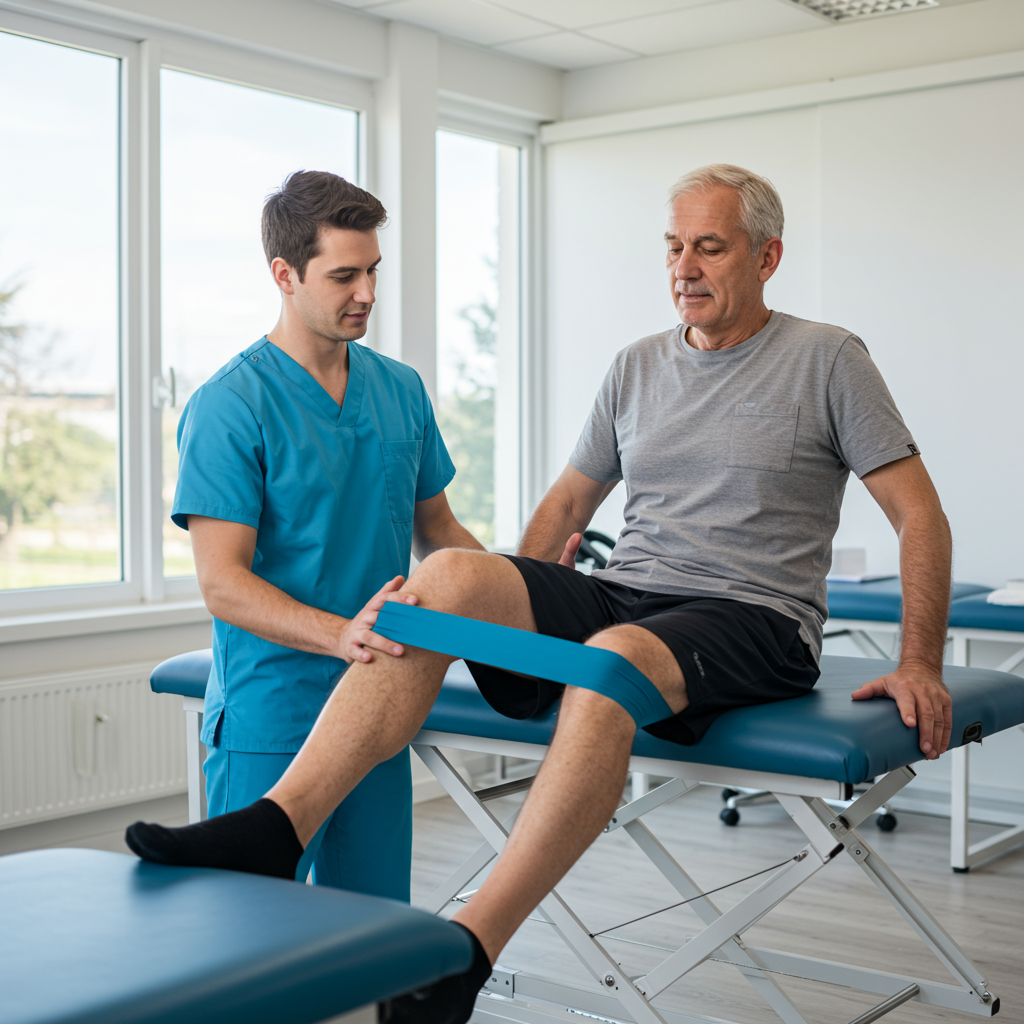Living with knee osteoarthritis (OA), where the joint cartilage wears down over time, often means dealing with persistent pain, stiffness, and reduced mobility. While medication can offer relief, many people seek effective non-drug approaches. Fortunately, research is shedding light on several therapies that can make a significant difference.
Recent studies, including a large analysis of 139 randomized controlled trials involving over 9,600 adults, have compared various non-drug treatments for knee OA symptoms. This research provides valuable insights into the relative effectiveness of different methods, ranging from physical therapies to bracing.
What the Research Says: Braces vs. Exercise
According to the meta-analysis, simple knee braces appeared to be one of the most effective interventions for reducing pain and stiffness and improving mobility in the short term. Water-based exercise (hydrotherapy) also ranked highly, coming in second. Other therapies assessed included land-based exercise, various forms of laser and electrical stimulation, joint taping, ultrasound, and shoe insoles.
However, medical experts consulted on the topic offer a crucial perspective. While knee braces can provide immediate support and relief for some individuals by helping redistribute load on the joint, challenges like discomfort can affect consistent use. More importantly, leading guidelines and experts often emphasize that staying active through exercise and maintaining a healthy weight are considered the most effective overall strategies for managing symptoms and potentially slowing the progression of knee arthritis in the long term.
Cornerstone Therapies: Exercise and Weight Management
Exercise is widely recognized as a first-line treatment for knee arthritis pain. It helps strengthen the muscles surrounding the knee (like hips, glutes, hamstrings, and quads), which can reduce stress on the joint itself. Regular physical activity also improves joint function, increases flexibility, aids in weight management, and boosts overall quality of life.
Various forms of exercise are beneficial:
Low-Impact Activities: Walking, biking, swimming, and aquatic exercise (hydrotherapy) are excellent choices as they allow movement with less direct impact on the knee.
Strengthening Exercises: Building muscle mass provides better support for the joint and can reduce injury risk.
Stretching and Flexibility: Improves range of motion and helps reduce stiffness.
Mind-Body Practices: Activities like Tai Chi and Yoga combine gentle movement with relaxation, showing promise for improving pain, function, and balance.
Consistency is key, but it’s important to start slowly and avoid exercising through sharp pain.
Weight management is equally critical, especially for individuals with obesity. Every extra pound of body weight significantly increases the stress on the knees during daily activities like walking. Even a modest weight loss of 5% or more can lead to noticeable improvements in knee function and pain. Maintaining a healthy weight also helps reduce systemic inflammation in the body, which can worsen arthritis symptoms. For individuals with obesity, achieving significant weight loss can be challenging; emerging research suggests that medications like semaglutide, primarily used for weight loss, can indirectly lead to substantial reductions in knee OA pain by helping patients lose significant weight. While not a direct OA treatment, this highlights the profound impact of weight on joint health.
Other Supportive Non-Drug Options
Beyond exercise and weight management, several other non-drug therapies can help manage knee arthritis symptoms:
Knee Supports: Wearing a brace or compression sleeve can provide support, stability, and immediate pain relief. Options range from simple compression sleeves to more rigid braces, which may be recommended by a healthcare provider depending on the location and severity of the arthritis in the knee.
Topical Treatments: Creams, gels, or patches applied directly to the skin over the knee can help relieve pain with fewer systemic side effects than oral medications. These often contain ingredients like NSAIDs (like ibuprofen), capsaicin, or lidocaine.
Heat and Cold Therapy: Applying heat (like a warm compress or bath) can help loosen stiff muscles and improve joint lubrication, while cold therapy (ice pack) can reduce pain, swelling, and inflammation. Experiment to see what works best for you, or alternate between the two.
Dietary Approaches: While no specific diet cures arthritis, an anti-inflammatory diet rich in whole foods, fruits (especially berries), vegetables (like dark leafy greens and beets), and healthy fats (like omega-3s found in fish oil) may help reduce inflammation and pain. Ingredients like turmeric (curcumin), ginger, and boswellia also show anti-inflammatory potential and can be incorporated into drinks or meals. It’s worth noting that studies on supplements like glucosamine and chondroitin have yielded mixed results, and some guidelines do not recommend them.
Mind-Body Practices: In addition to movement-based practices like Yoga and Tai Chi, techniques like meditation can help manage the perception of pain and improve overall well-being.
Acupuncture: While research results are mixed, some individuals find relief from acupuncture for knee arthritis pain. This is a therapy to discuss with your healthcare provider.
Therapies with Less Evidence
It’s also helpful to be aware that some therapies studied have shown less promising results. For instance, ultrasound pulse therapy and wedged shoe insoles have not consistently demonstrated significant effectiveness for pain reduction in studies.
Putting It Together
While the meta-analysis highlighted knee braces as potentially the most effective single therapy for short-term symptom relief, the consensus among experts remains strong: a comprehensive approach centered on exercise and weight management offers the most significant long-term benefits for managing knee osteoarthritis pain and improving function. Supportive therapies like braces, hydrotherapy, topical pain relief, heat/cold, and an anti-inflammatory diet can also play a valuable role.
The research comparing these therapies is still evolving, with many studies having limitations like small sample sizes or short durations. This means the current rankings provide preliminary clues rather than definitive rules for clinical practice. However, they offer valuable guidance for individuals seeking non-drug options.
Always consult with a healthcare professional or physical therapist before starting any new treatment plan to determine the safest and most effective strategies for your specific condition.




